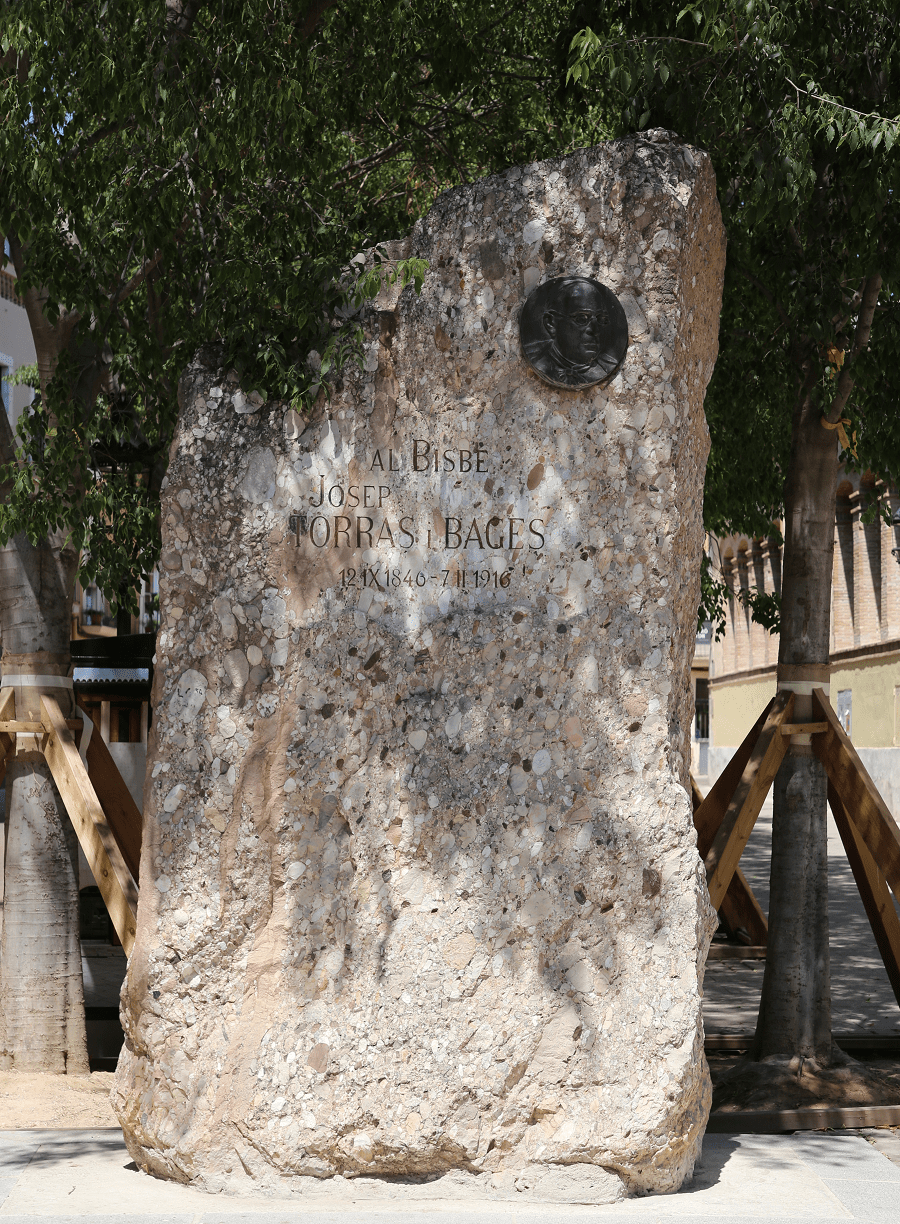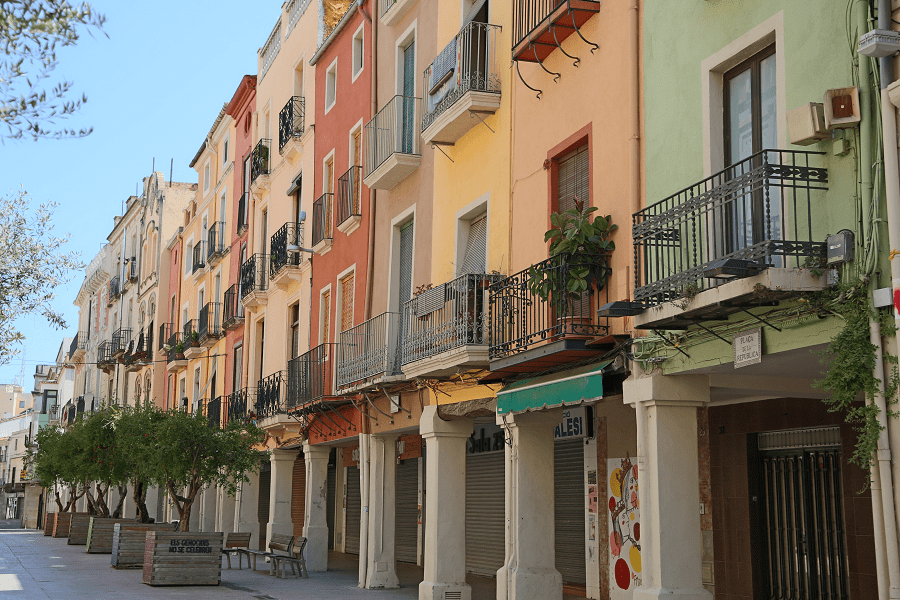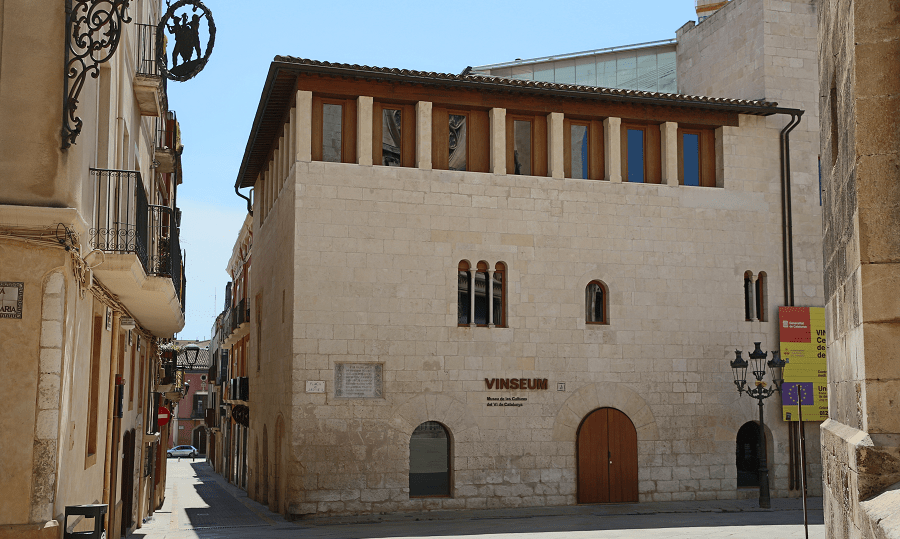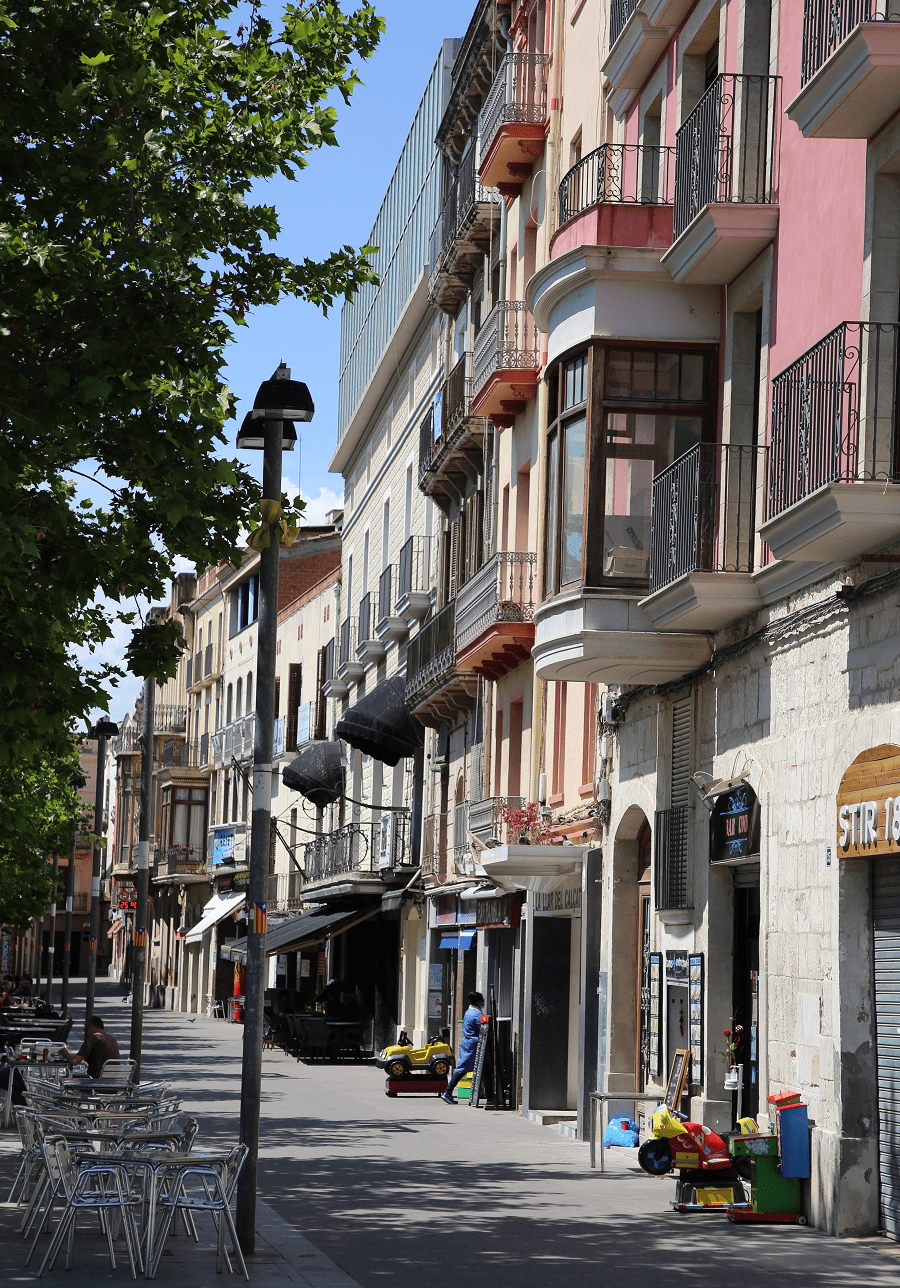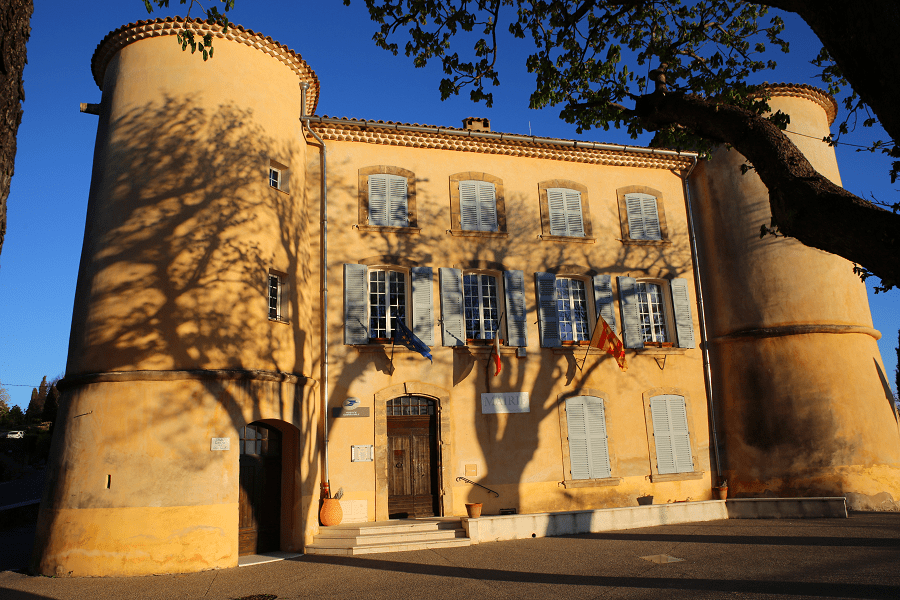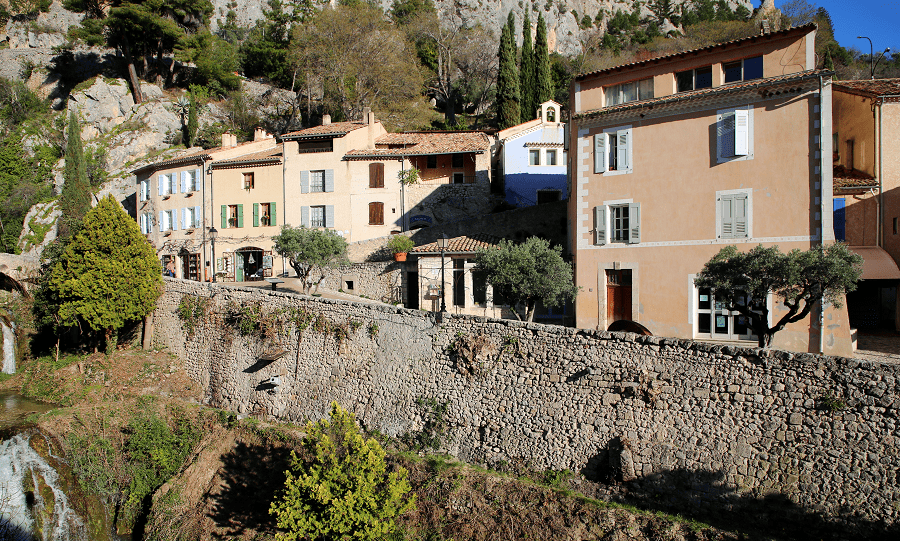Vilafranca del Penedès, or simply Vilafranca (Sp. Villafranca del Panadés), is the capital of the comarca of the Alt Penedès in Catalonia, Spain.
Vilafranca is known internationally for its wines: Catalan cava and wines of the Penedès Designation of Origin (D.O.), with multinational brands such as Bodegas Torres. Apart from wines and cavas, Vilafranca is also known for the Castellers de Vilafranca and its Festa Major, which has one of the oldest dragons in Europe (around 1600) and about twenty dances, snacks and casteller groups.
Wines
Penedès is a wine-producing region having a Spanish Denominación de Origen Protegida (DOP) (Denominació d’Origen Protegida in Catalan). Penedès DOP includes all Penedès region and municipalities of four other comarques: Anoia, Alt Camp, Baix Llobregat and Tarragonès.
The area is framed by the coastal hills of the Serra del Garraf and the higher inland mountains which skirt the Catalan Central Depression.
Long considered one of the country’s best wine-producing regions after the Rioja, it is also one of the most ancient viticultural areas in Europe. Perhaps better-known for its Cava production, a sparkling wine which has had its own Denominació d’Origen since 1986, white grape varieties predominate, although the region also produces some highly regarded, oak-aged reds.
Castellers de Vilafranca
The Castellers de Vilafranca is a cultural and sporting association whose main objective is to build castells (human towers). It has the status of a public-interest association. The group was founded in 1948 in response to the increased interest in human tower building in Vilafranca del Penedès, a Catalan tradition that has evolved since the 18th century Ball de Valencians, a dance from Valencia.
Nowadays, the Castellers de Vilafranca have about 400 active human tower building members of all ages, with no discrimination on the grounds of race, religion, sex or social status. They share the common goal of building human towers, cooperation, and teamwork. They have a constant desire to surpass themselves, and a will to maintain a lead over a select and competitive group of rival human tower associations. The group’s headquarters is Cal Figarot, Casa Via Raventós, a house located in downtown Vilafranca del Penedès and specially adapted for human tower building activity (for example, high, indoor ceilings for winter use and an open-air courtyard for spring, summer and fall).
Tourism and main attractions
The old town is remarkable, around the Plaza de Jaume I, where the main buildings such as the church of Santa Maria, the Royal Palace, the Chapel of Sant Pelegrí and the Chapel of Sorrows, of the 17th century.
The church of Santa Maria appeared in the late 13th century and is Gothic in style and with a single nave.
The Palau Reial currently houses the VINSEUM, the Museum of Wine Cultures of Catalonia.
In Plaça de la Vila one can find the church of Sant Joan, which has a Gothic structure and late examples of Romanesque tradition. In this same square is the Casa de la Vila, with modernist architecture. On the two boulevards, Nostra Senyora and Sant Francesc, and on Carrer General Prim and Carrer Hermenegid Clascar, one can see some of the best modernism in the town.
In the Plaça del Vall del Castell there is the House of the Festa Major of Vilafranca del Penedès.
TOP places to see:
The Royal Palace of Vilafranca del Penedes is a structure dating from the time of Pere II el Gran (between the 12th and 13th centuries). The exterior of the Royal Palace of Vilafranca today is the result of reconstructions, extensions and restorations carried out in the 20th century with the aim of adapting the estate to the Wine Culture Museum of Catalonia (VINSEUM).
In the same premises of the VINSEUM is the chapel of Sant Pelegrí, documented since 1334 and which was part of the first hospital of the order of Trinitarians in Vilafranca.
Basilica of Santa Maria. It is the first parish building in Catalonia built in Gothic style and follows the construction guidelines of Catalan churches with a single nave. It is a Gothic building built on an old Romanesque chapel. The main facade dates back to the 15th century, it has undergone several changes, the last one took place in the 20th century. Currently the bell tower of Santa Maria, the crypt and the interior of the church can be visited.
Palau Baltà is an old Gothic house built by Francesc Babau in 1308, but renovated in 1522 and later restored by August Font in 1889. It is a building that follows the structure of the Gothic stately homes, with the central courtyard. In 1889, the Vilafranca architect August Font restored it and introduced new elements to the building, including the main facade.
Cal Gomà (15th-16th century) was the manor house of Bishop Torras i Bages and stands inside the old walled enclosure of the city, it seems that very close to where the Jewish quarter was located. It is a building crowned by a characteristic gallery of lowered arches. The building currently houses the Torras i Bages municipal library.
Church and Convent of Sant Francesc or Old Casal Vilafranquí. The church of the old Franciscan convent, of which only the cloister has been preserved, is a sober Gothic building from the end of the 13th century of great architectural, artistic and historical value.
Palau Macià is a 15th century manor house that probably formed part of a large Gothic house, together with the current Casa de la Vila (Vilafranca City Council). The house retains the Gothic structure of the courtyard, currently covered, with the staircase and the gallery of semicircular arches.
The Church of the Trinity is unique in Vilafranca for being a building of transition from Gothic to Renaissance. Built in 1578, it is structured in a single nave, a slightly pointed barrel vault and five side chapels on each side.
The church of the Holy Trinity and the remaining outbuildings of the old Trinitarian convent form an architectural ensemble where the progressive transformations and extensions of the convent outbuildings and the complementary constructions are observed.
The Chapel of St. John was built in the early 14th century by the military order of the Hospitallers of St. John of Jerusalem. This is a Gothic building with no sculptural decorations and a clear Cistercian influence.
The Casa de la Vila is a public building of medieval origin built by Santiago Güell i Grau. It is currently used by the Vilafranca del Penedès city council.
Casa Guardiet-Berrozque is a medieval house built by Eugeni Campllonch i Parés in 1909. Inside there is a very original wrought iron railings.
The Mascaró Liqueur and Cava Factory is a building in the Cava Mascaró, built by Santiago Güell i Grau, 1912. Located in the first section of the Eixample in Vilafranca, an example of late modernism.
Museum of Wine Cultures of Catalonia. The museum has its own collections, with old and modern tools and utensils, models that reflect the evolution of technology applied to viticulture. Thus, one can find amphorae, ceramic jugs, tin and silver cups, specimens of Bohemian glassware, Murano or La Granja de San Ildefonso, etc. There are also specimens of wood crafts and leather skins, a good collection of jugs, and so on.
Cuisine and restaurants
Main meals of Vilafranca are:
- La Coca garlanda, made with matafaluga
- Les Catànies de Vilafranca, sweets prepared with almonds
- Vilafranca xató, a dish of cod or tuna, anchovies and olives
- Coca Vilafranquina
Sauce: garlic, sweet pepper, chilli (optional), olive oil, vinegar and salt.
There is one Michelin list restaurant in the city: Cal Ton, Casal 8, 32 – 62 EUR • Catalan
Shopping
Vilafranca del Penedès is a huge open-air mall that combines the modern character of the vast majority of shops and establishments, some of which are over a hundred years old.
Highlights include gourmet foods, wines and cava, souvenirs, gifts and accessories.
Apart from the variety of shops, you will also find two municipal markets.
The characteristic of Vilafranca are its street markets.
Also throughout the year you can enjoy different traditional markets: Vegetable Market, every working day in the Plaça de Sant Joan, Crafts, Antiques and Paintings Market, every second Sunday of the month between October and May, Roses and Books Market, for Sant Jordi, Flowers Market for All Saints Day (1 November) and for Christmas the Fair of Santa Llúcia and Kings’ Market.
Transport
Direct railway connection with Barcelona. Nearest airports are in Barcelona, Reus.
By car:
- From Tarragona 41 min (55.4 km) via AP-7
- From Barcelona 59 min (57.9 km) via AP-7
- From Madrid 5 hr 49 min (569 km) via AP-2 and A-2
Main information
Area: 19.6 sq. km (municipality)
Coordinates: 41° 20′ 41″ N, 1° 41′ 58″ E
Population: 40.154 (municipality)
Languages: Spanish, Catalan
Currency: Euro
Visa: Schengen
Time: Central European UTC +1





